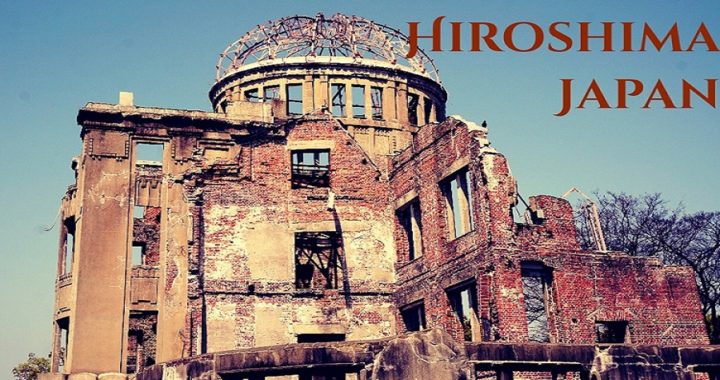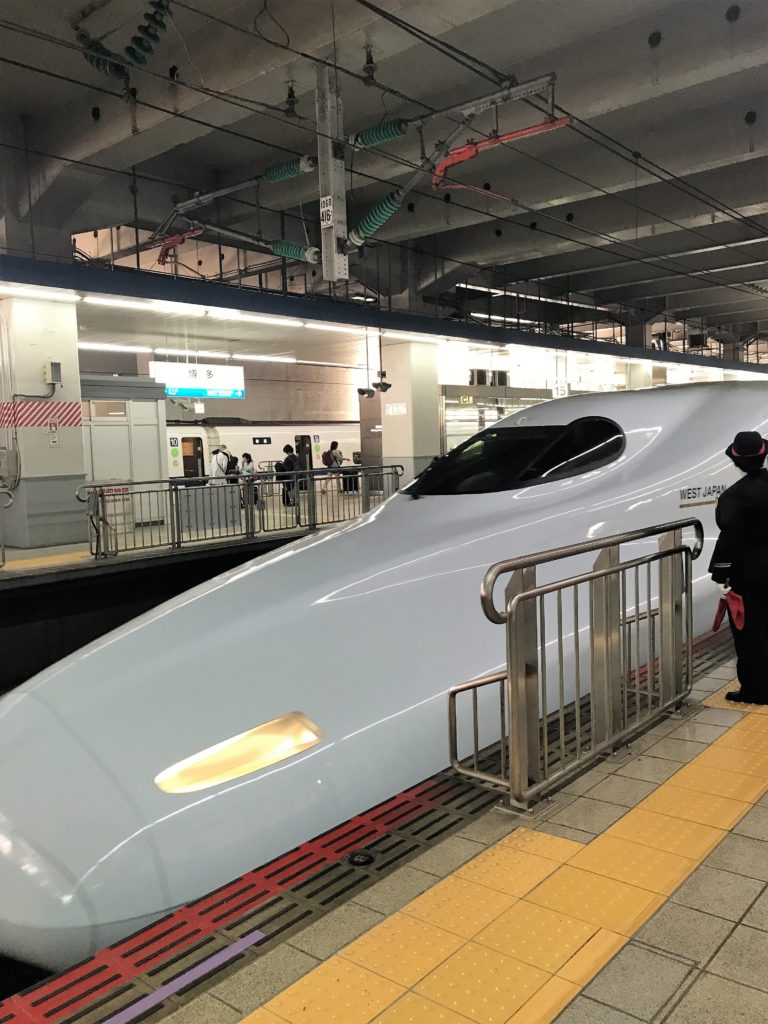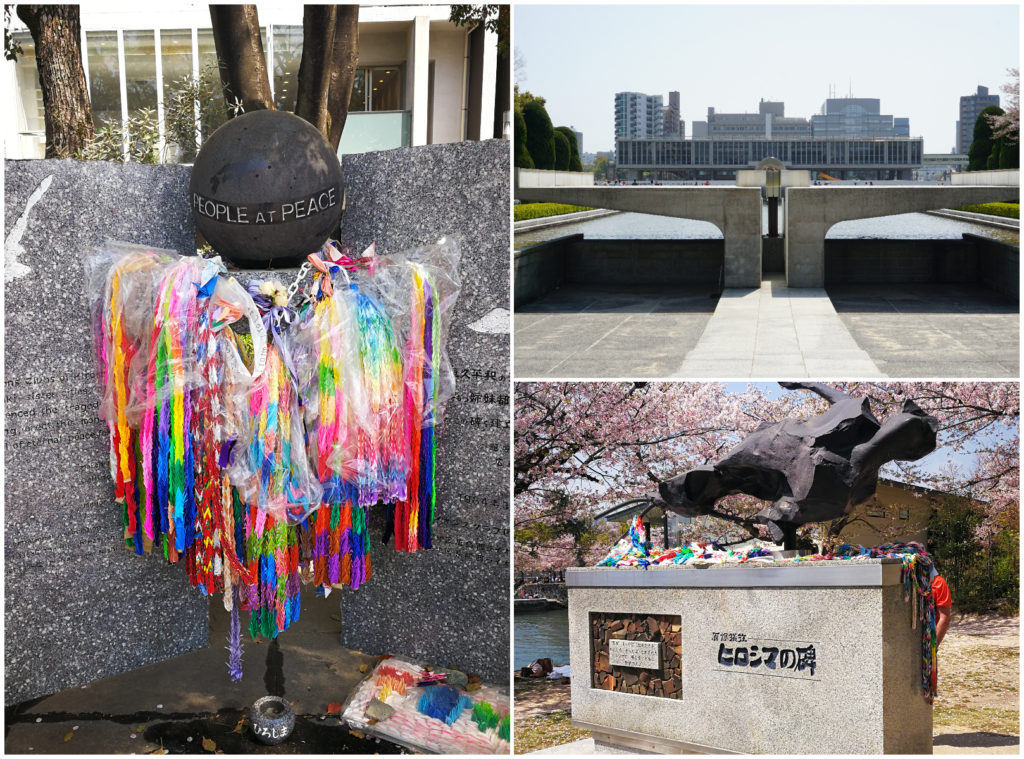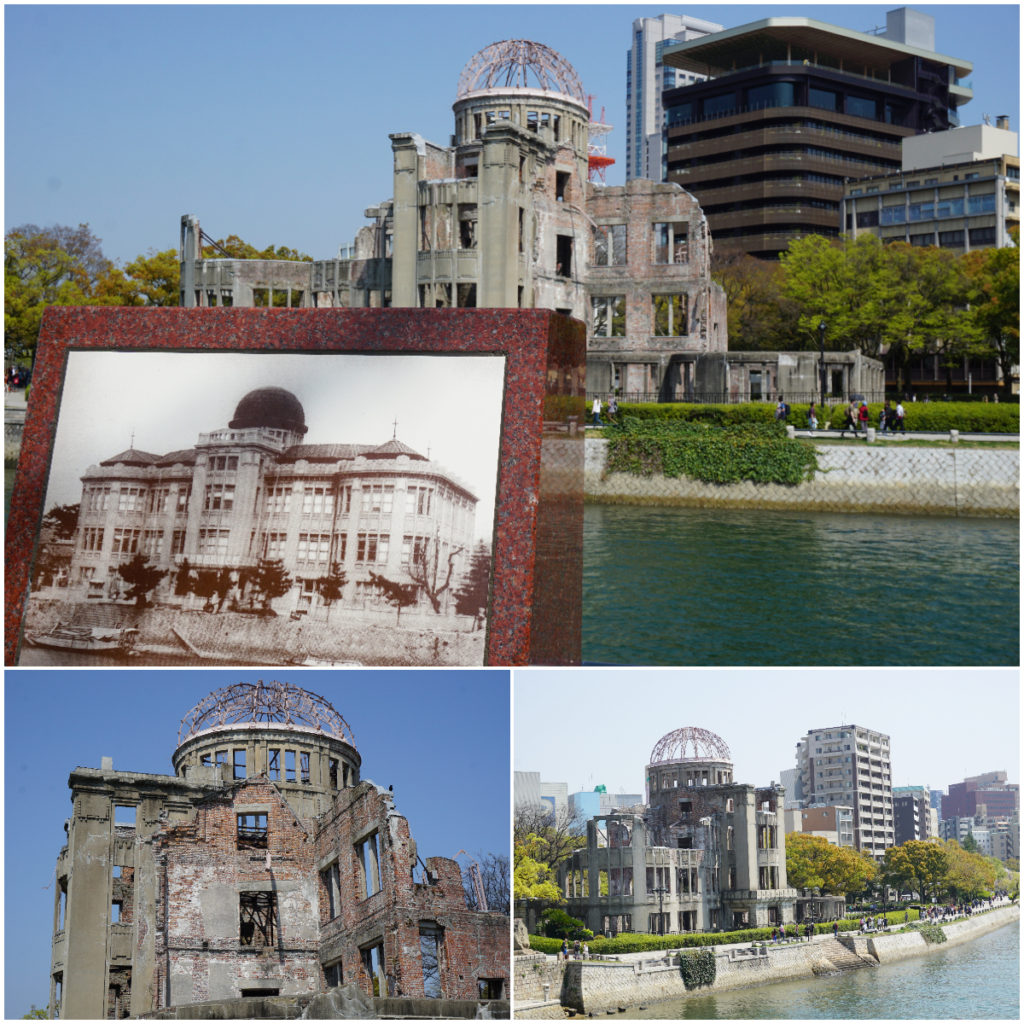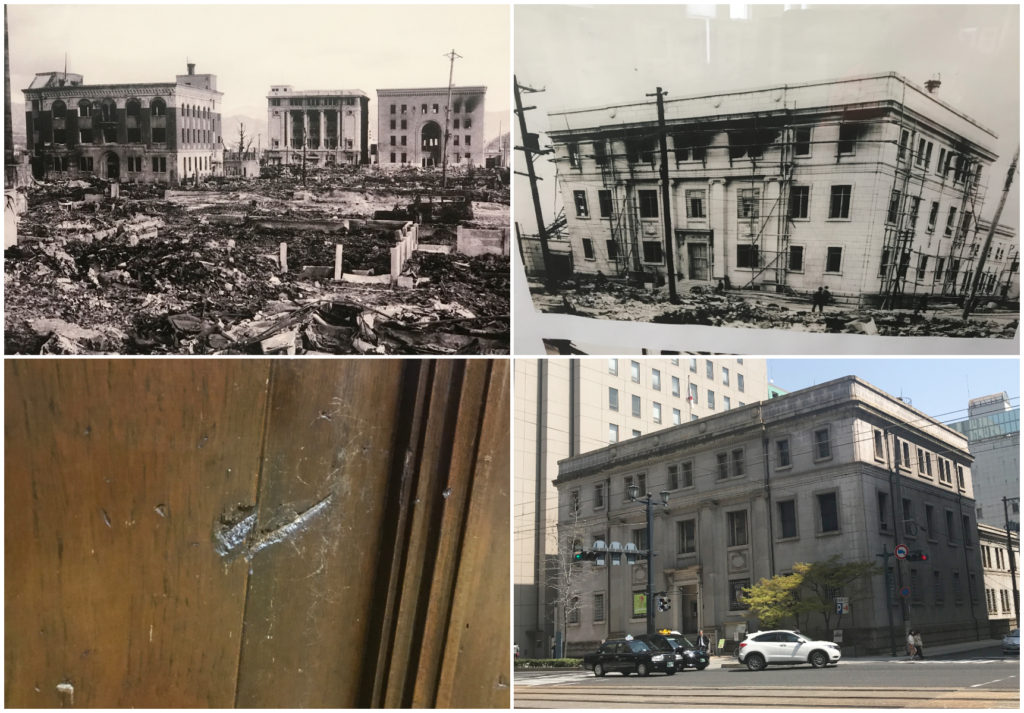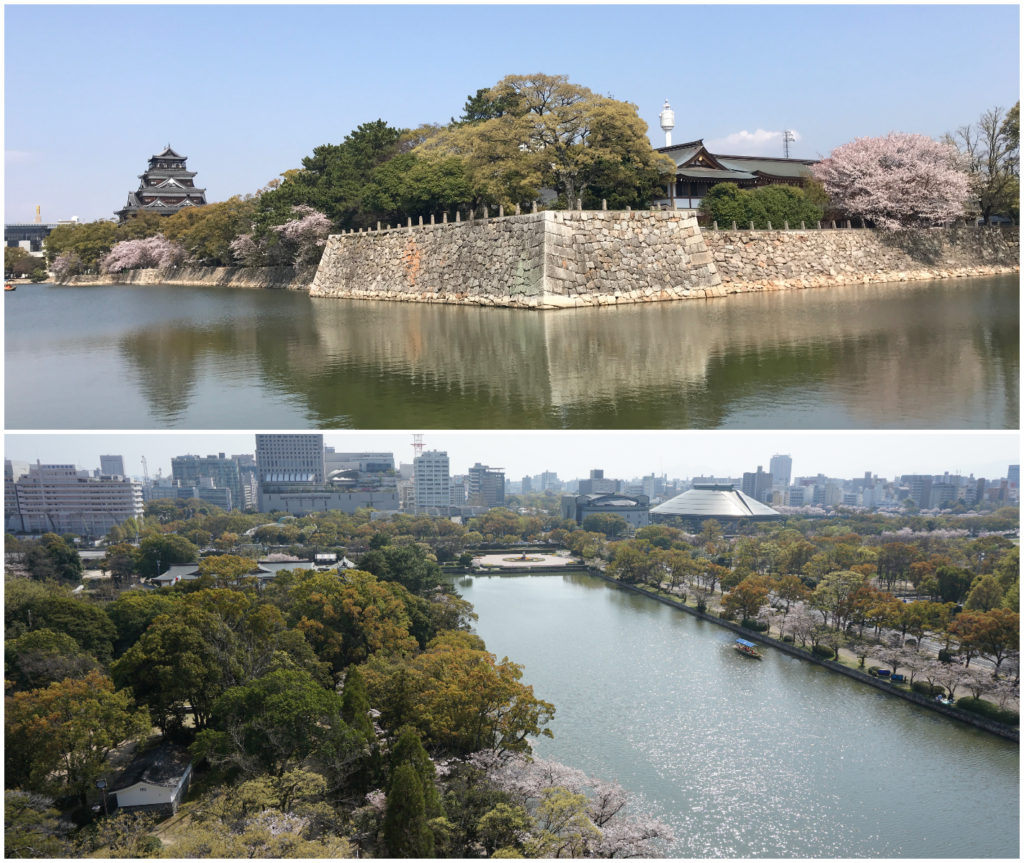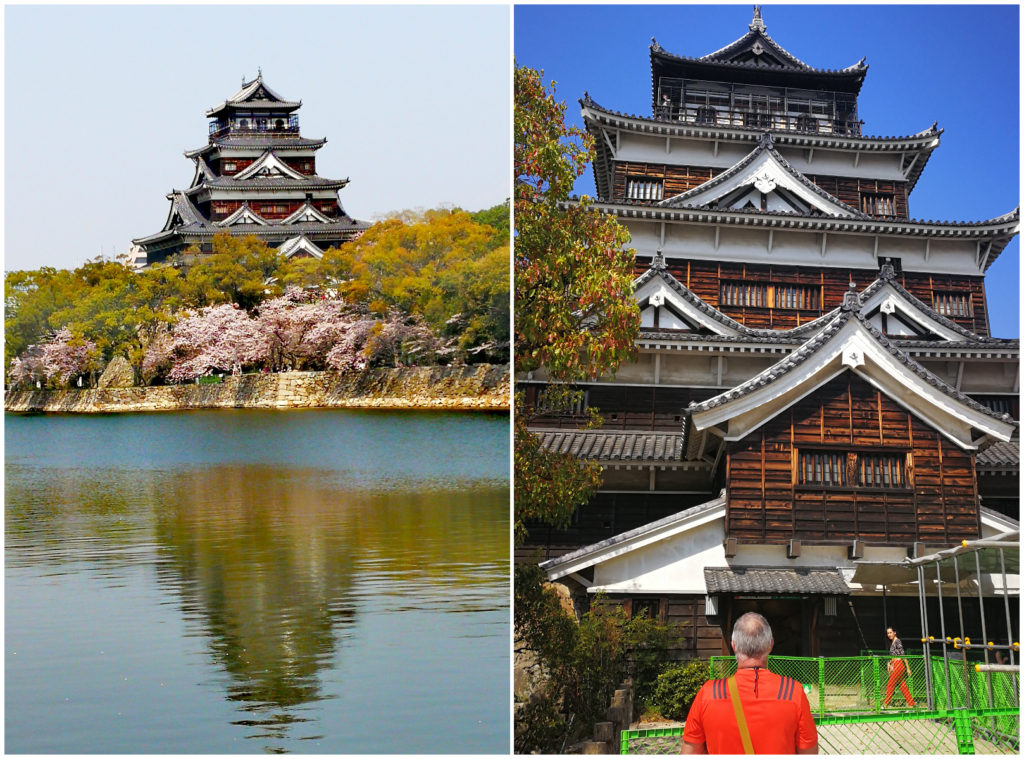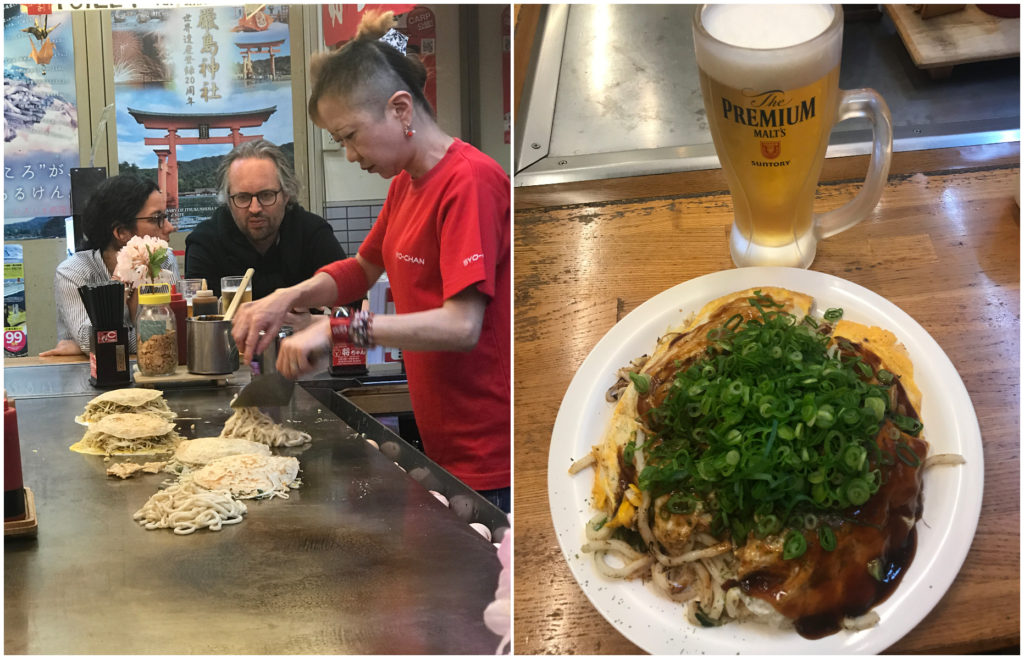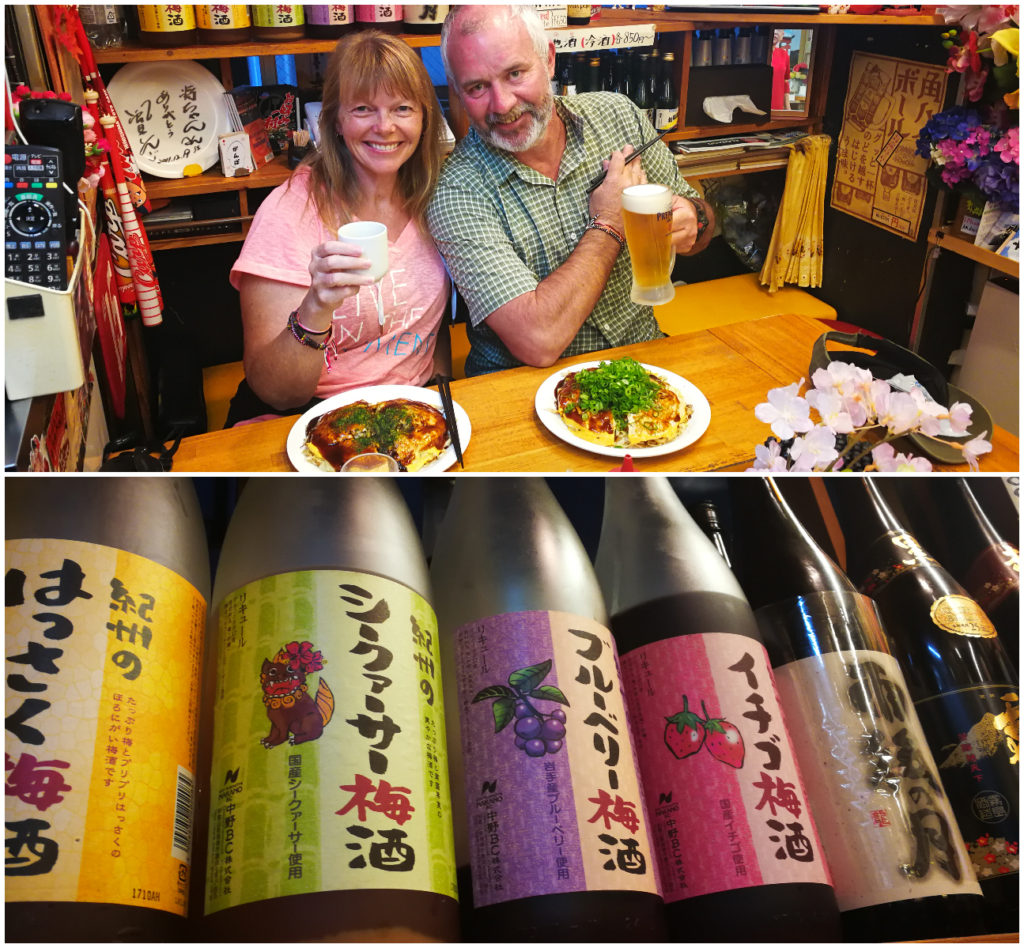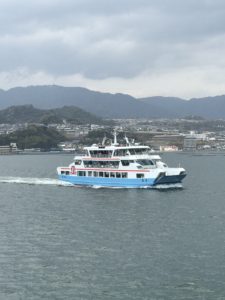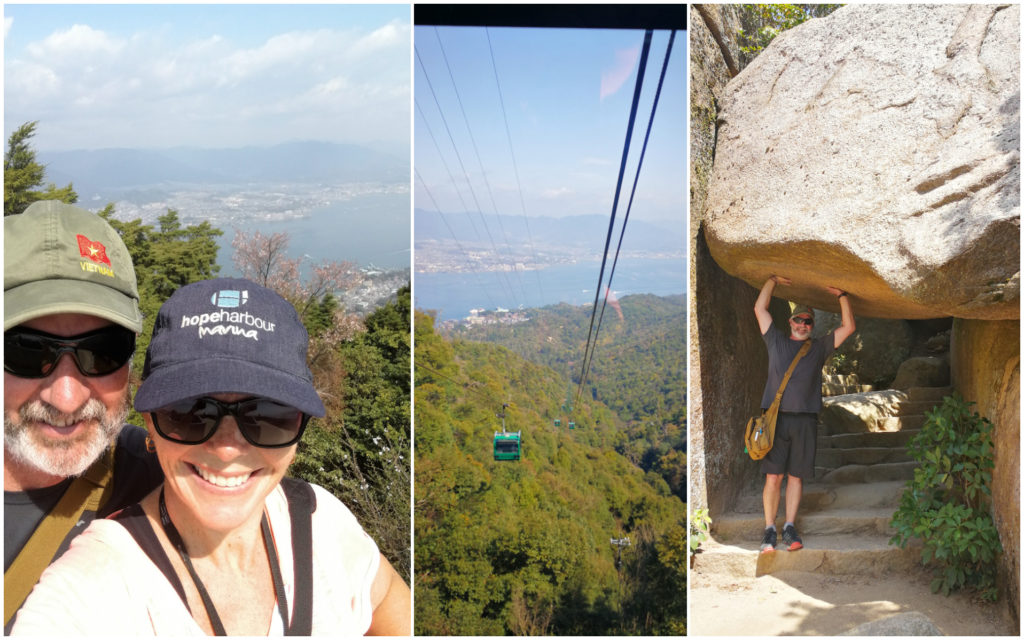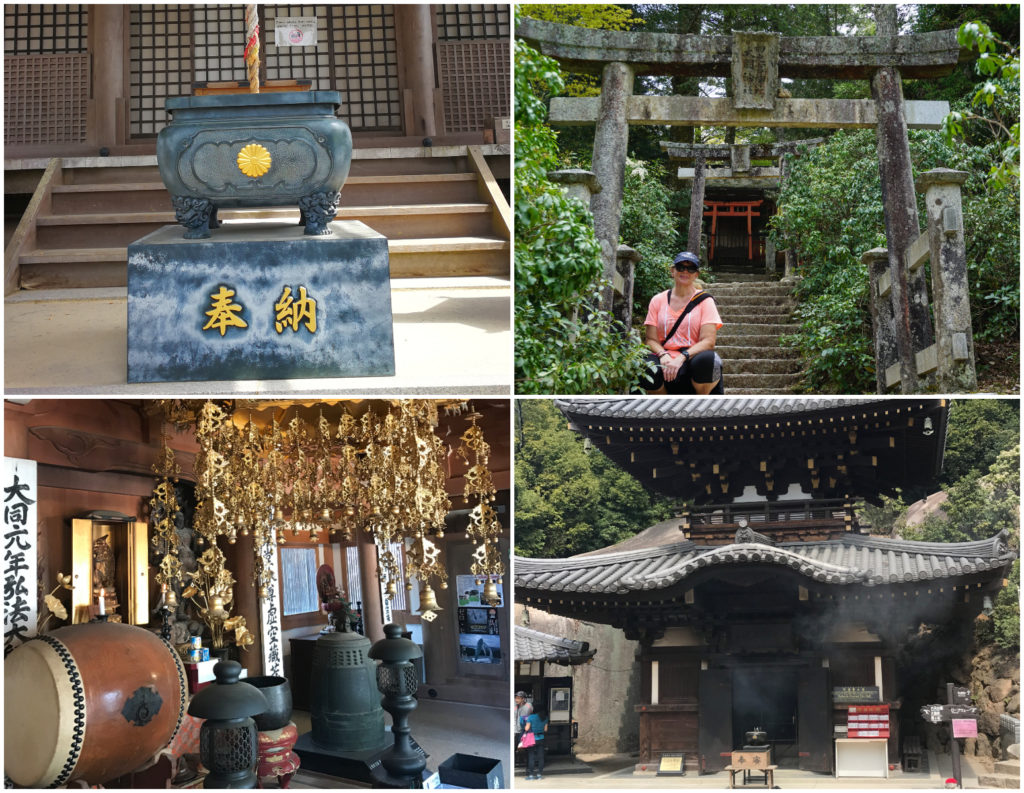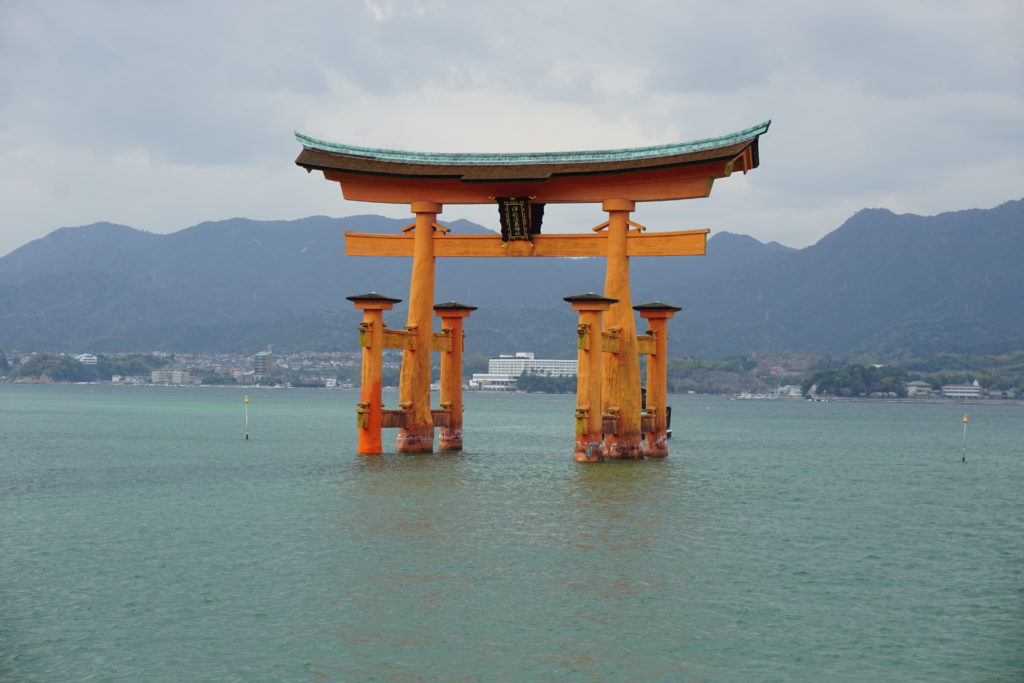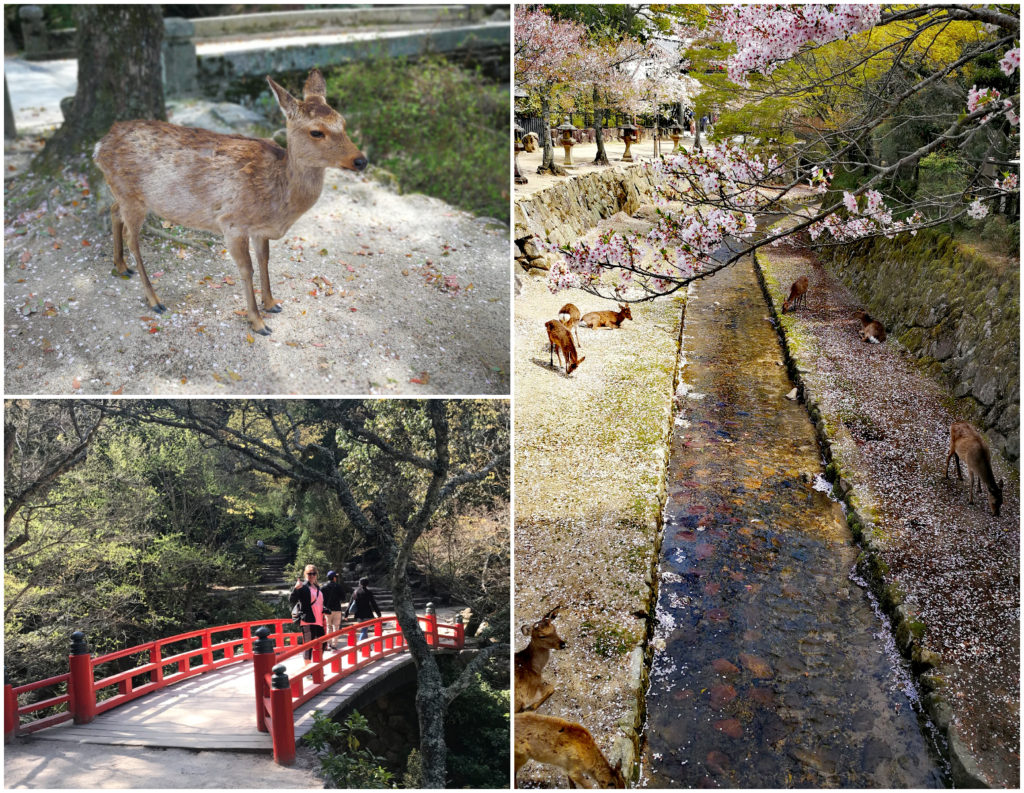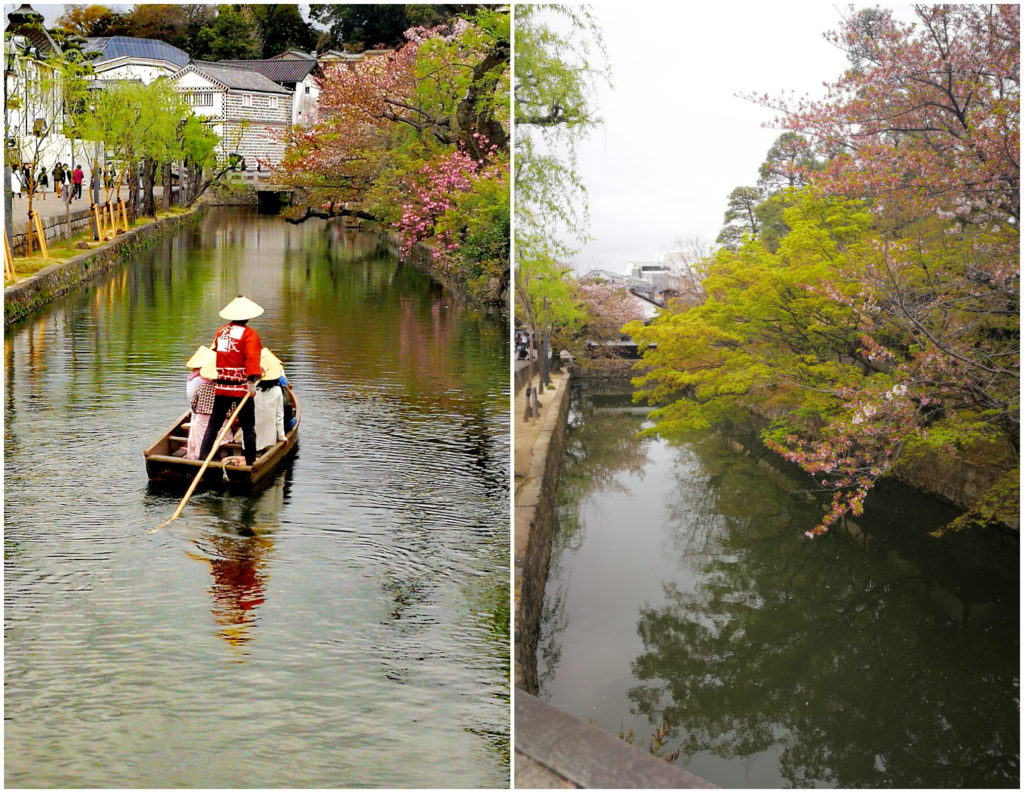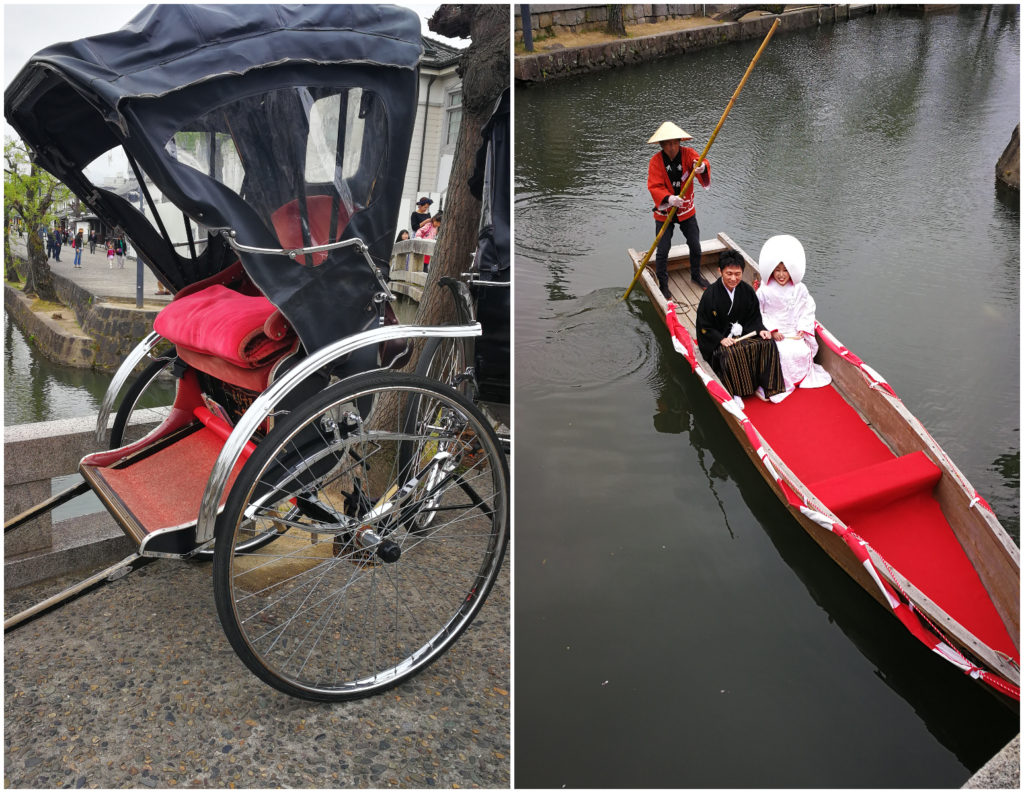Bullet Train from Fukuoka to Hiroshima
It was time to activate our 7 Day JR Pass as we boarded the Shinkansen (Bullet Train) to Hiroshima. For more information on how to purchase these passes, check out our Survival Guide to Japan.
The maximum operating speed of these trains is 320km/h so it only took us 66 minutes to travel the 287km from Fukuoka to Hiroshima.
If you want to know more about purchasing a JR Pass, click on the link below for a video on what you need to know.
Hiroshima’s Dark History
Everyone knows the history of Hiroshima. Scotty, in particular, is interested in all things pertaining to War History. We have visited many historical war sites on our months of travelling. These have depicted the atrocities of war inflicted upon our fellow countrymen or those we supported and fought with.
This was the first time visiting the scene of terrible devastation inflicted by one of our close allies at the time.
Would we feel any different than the other sites we’ve visited where atrocities were carried out?
During the final stage of World War II, the US detonated two nuclear weapons over Hiroshima and Nagasaki. The two bombings killed at least 129,000, most of whom were civilians. They still remain the only use of nuclear weapons in the history of warfare (hopefully it stays this way).
Japan announced its surrender to the Allies six days after the bombing of Nagasaki. This resulted in the ending of World War II, much to the reluctance of some Japanese Commanders. Fortunately, the ultimate decision lay in the hands of the Emperor at the time, who was more concerned in the preservation of his country and people.
The ethical and legal justification for the bombings is still debated to this day.
I think everyone who visits Hiroshima and Nagasaki has their own opinions regarding the dropping of the A-Bombs and whether it was justified or not.
Our own personal opinions haven’t changed since visiting Hiroshima.
Accommodation
After arriving on the Bullet Train, it was a short walk out of the main entrance and it was a matter of working out the correct tram (streetcar) to catch. There was a short amount of deliberating, we jumped on, what worked out to be the correct one and managed to get off at the correct stop.
After a short walk, we arrived at our accommodation, Hokke Club Hotel.
It was quite pricey but everything is in Hiroshima. At $462nz for three nights with no breakfast, it was at the upper end of the scale with regards to accommodation costs.
It was, however, in a great location, close to all the tourist attractions in Hiroshima. As with all hotels in Japan, they are strict with their check-in times and so we could not access our room until 3 pm. It was still only 11 am so we stored our packs with them and took off on foot to explore as much of Hiroshima as we could.
Things to See in Hiroshima
The Cenotaph and Peace Memorial Park
Officially named the ‘Memorial Monument for Hiroshima, City of Peace’, it is more commonly known as the Memorial Cenotaph.
The names of all those who lost their lives are inscribed inside the central stone vault, regardless of their nationality.
It currently holds more than 290,000 names. New names are added to the list every year as deaths incurred during the previous year that were attributed to the A-Bomb.
The Cenotaph is located in The Memorial park which is dedicated to the legacy of Hiroshima as the first city in the world to suffer a nuclear attack. The park is visited by thousands of people each year. The location of the park was once the city’s busiest downtown commercial and residential district. The park is built on an open field that was created by the explosion.
The park was developed not only as a memorial for the victims but also to advocate for world peace.
Atomic Bomb Dome
The Czech designed Promotional Hall (Genbaku Dome) was opened in 1915 and was located in the large business district next to the Aioi Bridge. The Aioi Bridge was the intended target for the A-Bomb. Instead, it exploded 240m away, very near to the Genbaku Dome.
Because the bomb detonated almost directly overhead, the building was able to retain its shape. It was the only structure left standing near Ground Zero. Everyone inside the building was killed instantly.
The remains of the building still stand today. The residents of Hiroshima decided to keep this tragic reminder of war intact. The site was designated as a World Heritage Site in 1996.
The Gengaku Dome stands almost exactly as it did after the bombing. There have been minimal changes made to ensure the stability of the structure.
Out of all the historical sites we visited at Hiroshima, the Atomic Bomb Dome would still have to be the most daunting and tragic monument.
Former Bank of Japan
The former Hiroshima branch of the Bank of Japan is in the centre of the city. The building was constructed in 1936 and still stands today, showing the scars of the A-Bomb. It was only 360m from Ground Zero but because of its strong structure enabled the bank to remain virtually intact.
Remarkably, only two days after the bombing, the Bank of Japan reopened for withdrawals and to provide space for temporary branches of other banks to operate.
Entry is free and it was well worth dropping in to take a look at the exhibition of photo’s, paintings and information boards. We spent some time wandering around the lobby, offices and somewhat eerie underground vaults. There were still gouge marks in the wooden panelling of the offices upstairs, where shards of glass were embedded due to the force of the explosion.
Hiroshima Castle
The original Hiroshima Castle (sometimes called Carp Castle) was built in the 1590’s but was destroyed by the atomic bombing. It was rebuilt in 1958, a replica of the original that now serves as a museum of the Hiroshima history before World War II.
We climbed the stairs and looked at the exhibits on each of the five floors until we reached the top story to get a great view across the flat city of Hiroshima.
The grounds are well landscaped and surrounded by an impressive moat and a few reconstructed buildings which served as the second circle of defence for the main castle.
Traditional Food – Okonomiyaki
Once again, we researched the local dish, a speciality of Hiroshima. There are several versions of Okonomiyaki (savoury pancake) throughout Japan so it depends on where you are, as to how it is served and what ingredients are used.
In Hiroshima, the ingredients are layered rather than mixed. The layers are typically pancake batter, cabbage, pork then other optional items can be added. Then you can have the choice of soba or udon noodles, topped with a fried egg and generous amounts of okonomiyaki sauce.
The amount of cabbage is usually 3-4 times the amount used elsewhere. It starts out piled high and is pushed down as the cabbage cooks.
We found an area renown for its Okonomiyaki. A cluster of small eating stalls, all within a 4 story building. They all seemed to serve the traditional Okonomiyaki so it was a matter of finding a seat at one of them and watching the masters at work. We enjoyed it so much that we went back the next night to try a different stall. They all have their different styles but we enjoyed it just as much the second time around.
More to Hiroshima than the A-Bomb
There is so much more to see in Hiroshima than the memories and scars of the A-Bomb.
Miyajima Island
We had activated our JR Pass to get to Hiroshima so being typical Kiwi’s, we wanted to get our money’s worth. We could travel anywhere on the JR train line and it even covered some ferry crossings.
With this in mind, we set off to visit Miyajima Island which was a train and ferry ride – perfect. It is only a 10-minute ferry ride with JR West Ferry. Click on the link to access schedule and prices (don’t forget though you can use your JR Rail Pass).
Miyajima (officially known as Itsukushima) means “shrine island”. It is only 30 square kilometres and has a permanent population of 2,000. The Islanders work hard to preserve the forests and clearly respect nature. Tourism is their main source of income. It is ranked as the 3rd best places to visit in Japan so an early start to beat the crowds is imperative.
Other things that Miyajima is renown for throughout Japan is their spectacular maple trees (it would look amazing in autumn), Momiji pastries filled with jam or custard (with maple-leaf emblems) as well as chocolates and cheese.
Deer are thought of as sacred because they are considered messengers of the gods. They walk the streets of the town, not afraid of the tourists or hundreds of clicking cameras!
Our Favourite Attractions
Ropeway up Mt Misen
As soon as we arrived at the island we walked straight to the Ropeway (Cable Car). Our past experience of Cable Cars in Asia has taught us that there are invariably queues to board.
We are so glad we chose this option first as the queue was minimal, especially compared when we came back down again. There was a considerably long wait to ascend the mountain.
It is about a 20-minute walk from the ferry pier. The ride up the mountain takes about 20 minutes and you are required to transfer ropeways along the way.
Even when taking the ropeway, there is still a considerable amount of walking required to reach Mt Misens summit. It is still another 100 metres higher and about a kilometre away from the upper ropeway station.
Mt Misen
At 500 metres above sea level, Mt Misen is the highest peak on Miyajima. It was a clear day so we had a spectacular view of the Seto Inland Sea and as far as Hiroshima City.
There are a number of Buddhist buildings near the summit. The buildings are located along the trail, about 5 minutes before you reach the summit. One of particular interest was the Hall of the Spiritual Flame (Reikado). The building protects a flame that is believed to have been lit over 1200 years ago when worshipping on the mountain began. It is also believed that the holy water boiled by this fire heals all sorts of diseases. The flame was used as the pilot light for the ‘Flame of Peace’ in Hiroshima Peace Memorial Park.
Itsukushima Shrine and Torii Gate
This shrine (of which the island was named after) has been destroyed several times, but the first shine buildings were believed to have been built in the 6th century. The present shrine dates back to the mid-16th century.
The shrine and its torii gate are unique for being built over the water, which seemingly floats in the sea during high tide.
Torii Gates always mark the approach and entrance to a shrine. They come in various colours and are made of various materials. Most torii, however, are made of wood and are painted orange and black.
No doubt about it, this particular Torii Gate offered wonderful photo’s and it was a stroke of luck that we had timed the high tide at the right time. We were blessed with some great shots.
To be honest, we have visited many, many temples and shrines so we were able to get the great shots we wanted without having to pay the entrance fee to walk through the shrine.
Walking Trails
We spent a pleasant and relaxing half day on Miyajima and very glad that we arrived early to avoid the peak tourist traffic.
We strolled along the island’s charming walking paths around the town. There are many paths to choose from with numerous lookout points and clusters of cherry trees.
I would fully recommend that you put Miyajima on the lists of ‘must do’ if visiting Hiroshima.
Click on the link below for some of the highlights of our day trip to the island.
Kurashiki
Once again, we wanted to use our JR Pass as much as possible so today we took at 67-minute bullet train ride (then a local 10-minute train) to the old merchant quarter at Kurashiki.
The town has a preserved canal running through the old part of the town which dates back to the early 16th century. The city served as an important rice distribution centre and the name translates to ‘town of storehouses’.
Many of the former 16th-century wooden storehouses have been converted into museums, boutiques and cafes.
The old quarter is only a 10-minute walk from the Kurashiki train station so it is easy to get to.
It was so pretty wandering both sides of the canal amongst the traditional black tiled, white painted buildings. It was very picturesque with weeping willows bordering the canal.
Time to Move On
Our time was up in Hiroshima. It would be fair to say that we loved our time here. We were pleased that we added it to our short itinerary in Japan.
Click on the link below for a video of our highlights in Hiroshima.
